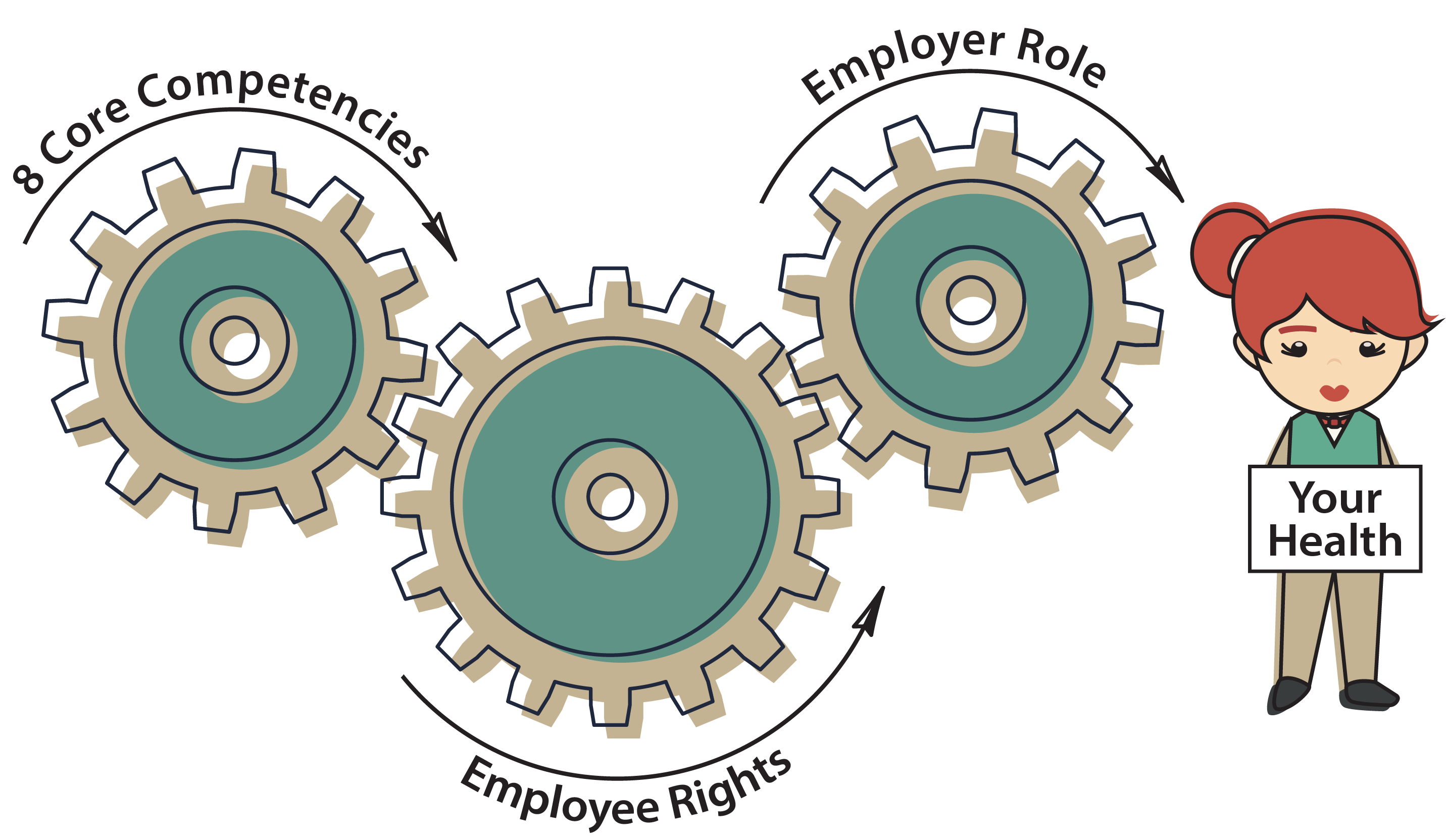YOUNG RETAIL WORKERS
What You Know Can Keep You Safe and Healthy at Work

You can stay safer on the job by becoming familiar with the following three topics:
Below are some of the basic principles of each topic.

8 Things You Should Know About Working Safely ( NIOSH Eight Core Competencies )
It’s your employer’s responsibility to provide you with a safe and healthy workplace, but you should have a few basic skills to help protect yourself. NIOSH has developed basic skills that you can learn and can apply to any job you will have.
If necessary, ask your supervisor to help you understand how these basic skills apply to your current job. You also can email NIOSH at (retailwrkr@cdc.gov) to ask for more information about these skills.
You should be able to do these eight things:
- Recognize that although work is valuable, any worker can be injured, become sick, or even be killed on the job. Understand how workplace risks can affect your life and your family.
- Recognize that work-related injuries and illnesses are predictable and can be prevented.
- Identify hazards at work and predict how workers can be injured or made sick.
- Recognize how to prevent injury and illness. Describe the best ways to handle hazards on the job, and apply these to problems at your workplace.
- Spot emergencies at work and know the best ways to handle them.
- Recognize employer and worker rights and responsibilities that play a role in safe and healthy work.
- Find resources that help keep workers safe and healthy on the job.
- Show how workers can communicate with others—including people in charge—to ask questions or report problems or concerns when they feel unsafe or threatened.
Employee Rights
As an employee, you have safety rights but also important duties to keep your workplace safe for yourself and others.
- Work with your supervisor on safety issues so they can carry out their responsibilities to keep you safe.
- Use your work-supplied safety equipment and safety training.
- Follow procedures designed to keep you safe. If you think something is unsafe at work, tell your supervisor.
- If you still have concerns about a job risk, ask your supervisor to follow-up with a safety person or someone who may have a better understanding of the risks in question.
- You have the right to refuse to do a job or task that you believe is unsafe.
You also can show your concern about an uncorrected safety issue by quitting your job (resigning). - Remember: You can replace a job but not a lost limb or injured back.
Find the Occupational Safety and Health Administration (OSHA) contact for your state at http://www.osha.gov/dcsp/osp/states.html. You also can call OSHA at 1-800-321-6742.
Employer Responsibilities
Employers must provide a workplace free of known hazards that can cause illness, injury, or death. For your safety, an employer is responsible for the following actions:
- Informing you of potential or known workplace hazards, through training and other means (policies, programs, and safety practices)
- Training you in a language and with wording you understand, so that you can follow the safety rules
- Explaining the rules, regulations, and codes of the OSHA Act (the Act)
- Openly displaying the OSHA poster (or state plan equivalent) listing everyone’s rights and responsibilities
- Not singling out employees who use their rights under the Act (see OSHA’s Whistleblower Protections fact sheet)
Find Out More
NIOSH: Are You a Teen Worker?
OSHA Safe Work for Young Workers
OSHA Brochure on Workers’ Rights
Source
NIOSH [2014]. Safe • Skilled • Ready Workforce Program . U.S. Department of Health and Human Services, Centers for Disease Control and Prevention, National Institute for Occupational Safety and Health.
- Page last reviewed: May 31, 2016
- Page last updated: May 31, 2016
- Content source:
- National Institute for Occupational Safety and Health Education and Information Division


 ShareCompartir
ShareCompartir